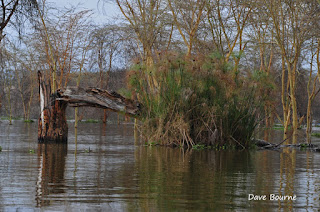Nile Monitors are large African lizards. They are the second-largest reptile in the Nile river. and have muscular bodies, strong legs, and powerful jaws.
Their teeth are sharp and pointed in juvenile animals and become blunt and peg-like in adults. They also possess sharp claws used for climbing, digging, defense, or tearing at their prey.
Like all monitors, they have forked tongues, with highly developed olfactory properties.
They have quite striking, but variable, skin patterns, as they are greyish-brown above with greenish-yellow barring on the tail and large, greenish-yellow rosette-like spots on their backs with a blackish tiny spot in the middle. Their throats and undersides are an ochre-yellow to a creamy-yellow, often with faint barring. Animalia


















































